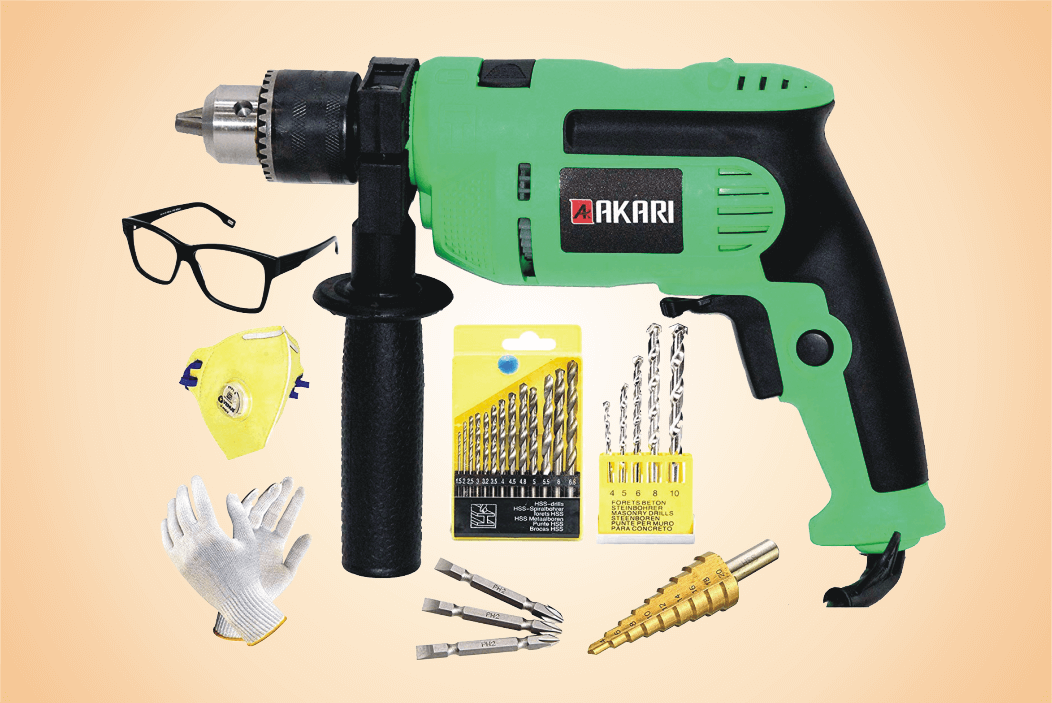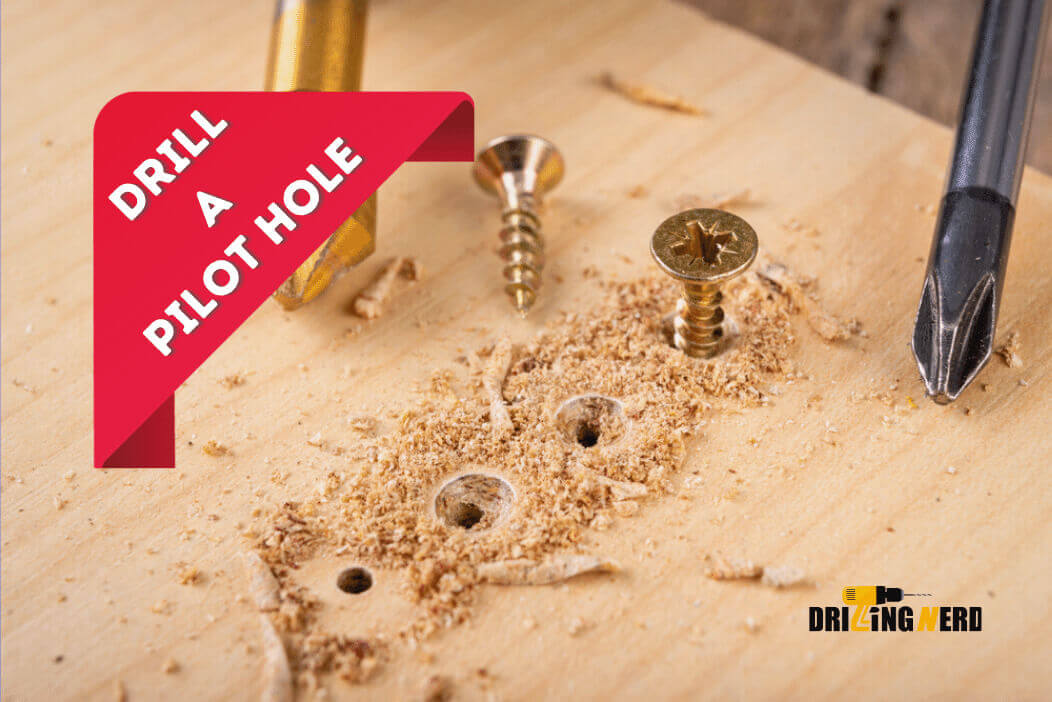Plaster has been used to cover the masonry walls before the arrival of drywalls. Builders and homeowners preferred plaster over other options because of the low cost, high durability, and low setting time.
Furthermore, plaster is a cementitious material that can be molded into different shapes to add to the elegance of the structure. However, walls covered with plaster are hard, and it is not easy to put a nail in them. Therefore, this article explains how to drill into plaster walls without any damage.
What is the Difference Between Plaster and Drywall?
Before getting started with drilling plaster to hang stuff, it would be best to know whether your house has plaster or drywall. The terms drywall and plaster are sometimes used interchangeably. However, for experienced contractors, the difference is much like chalk and cheese. For instance, both these covering materials look very similar physically.
However, there is a great difference in their material properties and requires separate practices to drill in them. Therefore, before you start drilling, please take a look at the wall to identify its covering material. Here are a few things that you should take into consideration when determining your wall properties:
Drywall
- The biggest difference between drywall and plaster is the thickness of the covering. Drywalls are highly adhesive, so they don’t need multiple coats.
- Therefore, Dry Walls are thinner than plaster walls. The average thickness of drywall is ½(0.5) inches.
- Drywalls are made of gypsum sandwiched between sheets of thin wood or paper and sold in the form of a panel.
- They are installed with the help of studs fixed in the masonry walls.
- Drywall is cheaper and easier to install.
Plaster
- The plaster is harder and more brittle than drywall.
- Plaster is less adhesive and requires laborers to apply thick coats for proper adherence to the wall.
- The thickness of plaster varies from wall to wall. Usually, the average thickness of plaster is more or less 1-inch.
- Plaster is made from a number of ingredients like fillers, aggregate, water, and cementing compounds.
- Plaster is applied in the form of a cement covering, and the installation requires expertise.
How to identify a Plaster Wall?

Plaster and drywall are quite similar visually. However, their material properties differ, and therefore it is necessary to identify your type of wall before wondering how to drill a hole in the wall. There are a few visual cues that you can look for:
- As drywall is softer than plaster, you should start with the hardness test.
- Thump a pin or a thumbtack in the wall with your bare hands. (no hammer).
- If the pin gets inside easily, you have drywall.
- Plaster, on the other hand, will either crack or never allow the pin inside.
- Look in an area where the behind the wall region is visible. This area can be inside a cupboard or even in the basement.
- If you see any lath or plaster, these are all the signs you need.
- If you fail to find such an area in your house, remove a switch plate from the wall.
- If the wires are loose and the lath is visible, it is plaster.
- The wires in drywall are usually enclosed in an electric box.
Things You Will Need to Drill into Plaster

Now that you are sure that you have plaster on the walls. It is time to start screwing into plaster. For this purpose, you are going to need the following equipment:
- Electric stud finder.
- Masking tape.
- Plaster screws
- Power drill
- A high-quality drill bit such as Cobalt steel drill bit or carbide bit.
- Dust mask, gloves, and goggles.
- Plaster patching compound
How to Screw into Plaster Walls?
After you have collected all the necessary equipment and chosen your helper, it is time to start screwing into lathe and plaster walls. However, there are a few things to keep in mind before you get started.
Firstly, plaster is hard but delicate material; it can chip on the sides of the hole. Secondly, never rush or exert any force on the drill and let it do its job patiently. Lastly, plaster tends to blow dust when drilled, so always wear a safety kit including gloves, goggles, and a dust mask.
- Attach the carbide drill bit for plaster on your power drill and wear the safety kit.
- Make sure that your helper is also wearing a mask to prevent allergic reactions.
- You are going to need the best power drill with adjustable speed settings.
- Put a piece of masking tape on the spot where you want to drill.
- The masking tape will prevent chipping and cracking of the plaster in the nearby locations.
- Set the drill to the lowest speed settings and place it on the spot.
- Don’t apply any external force to the drill, and keep your hand slow and steady.
- The depth of the hole depends on two things:
- The weight of the object you want to hang.
- Secondly, the length of the screws.
Once you have finished drilling the hole, remove the masking tape. Look for any signs of chipping and cracks on the wall. Suppose you find any damage on the wall, never leave it for later. Immediately cover the cracks with the plaster patching compound and let it completely dry before proceeding further.
How to Hang Pictures on Plaster Walls without Nails?

The first thing that you should do is that you can’t put a nail in the plaster wall without causing damage. The best solution to hanging stuff on the walls is to either use the hanging rail or drill hole before putting screws for plaster in the wall.
Furthermore, it is best if you can find any screw studs because they are more durable and easy to install. Here is a step-by-step guide on how to hang heavy things on plaster walls:
- Drill a hole in the plaster wall using the method described above.
- The type of support that you need for hanging depends on the weight of the material.
- For instance, a light object such as a picture or a wall clock can be supported with screws and hanging rails.
- Put a 1-inch screw in the drilled hole, tight it with the screwdriver, and you are good to go.
- Heavier objects require studs or anchors depending on availability and the weight of the object.
- You can use the electric stud finder to find and use the installed studs in the wall.
- If you fail to find any studs, you can always buy anchors from the hardware store and place them using the same method as the screws.
Frequently Asked Questions
Conclusion
By now, you fully understand the process of screwing into plaster. You should always drill a hole before putting any screws in the plaster wall. Moreover, the type of support depends on the weight of the object you are trying to hang. I hope this article was informative and interesting for you.









